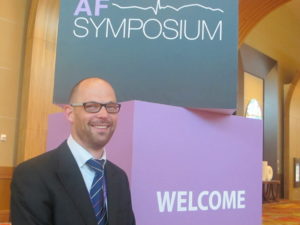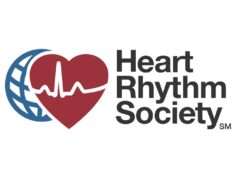
Results of AF-FICIENT, the first-in-man study which seeks to evaluate the safety and performance of the new Apama radiofrequency (RF) balloon catheter system (Apama Medical), have shown the device is safe and allows successful pulmonary vein isolation for paroxysmal atrial fibrillation (AF) treatment.
This prospective, non-randomised, multicentre pilot study was presented for the first time by Matthew Daly (Christchurch Hospital, Christchurch, New Zealand) at a late-breaking clinical trial session at the AF Symposium (12‒14 January, Orlando, USA).
Daly explained that the Apama RF balloon catheter is an over-the-wire 28mm balloon with 12 proximal and six distal electrodes designed to map and ablate. The system also has built-in cameras to provide real-time visualisation of electrode contact to the tissue during the entire procedure.
Another RF balloon catheter, developed in Japan and known as the “hot balloon”, was previously studied, Daly told Cardiac Rhythm News. “This balloon delivers energy everywhere it touches; therefore, there is not much control to where the energy goes. Its developers reported good initial results, but now it seems to have faded,” he commented.
Daly reported the results from the first 18 patients treated with the new Apama technology at four centres in New Zealand, Prague and Paraguay.

The study met its primary safety endpoint with no device or procedure-related serious adverse events at seven and 30 days. Successful pulmonary vein isolation was achieved with a 98% success rate, Daly told delegates. He also noted that the “procedural times were comparable to other technologies” with an average balloon time of one hour and 39 minutes. After six-month follow-up, patients demonstrated 80% freedom from AF.
In conclusion, Daly said, the Apama RF balloon catheter system is able to achieve successful pulmonary vein isolation with “quick ablation and without excessive catheter manipulations.” However, he noted, “this initial experience warrants further clinical use.”
When asked about what would be a possible advantage of this RF balloon catheter compared to cryoballoons, Daly told Cardiac Rhythm News: “The theoretical advantage of this RF balloon catheter over cryoballoons is that it will eventually be faster and the customisable geometry will avoid complications like phrenic nerve palsy.”












